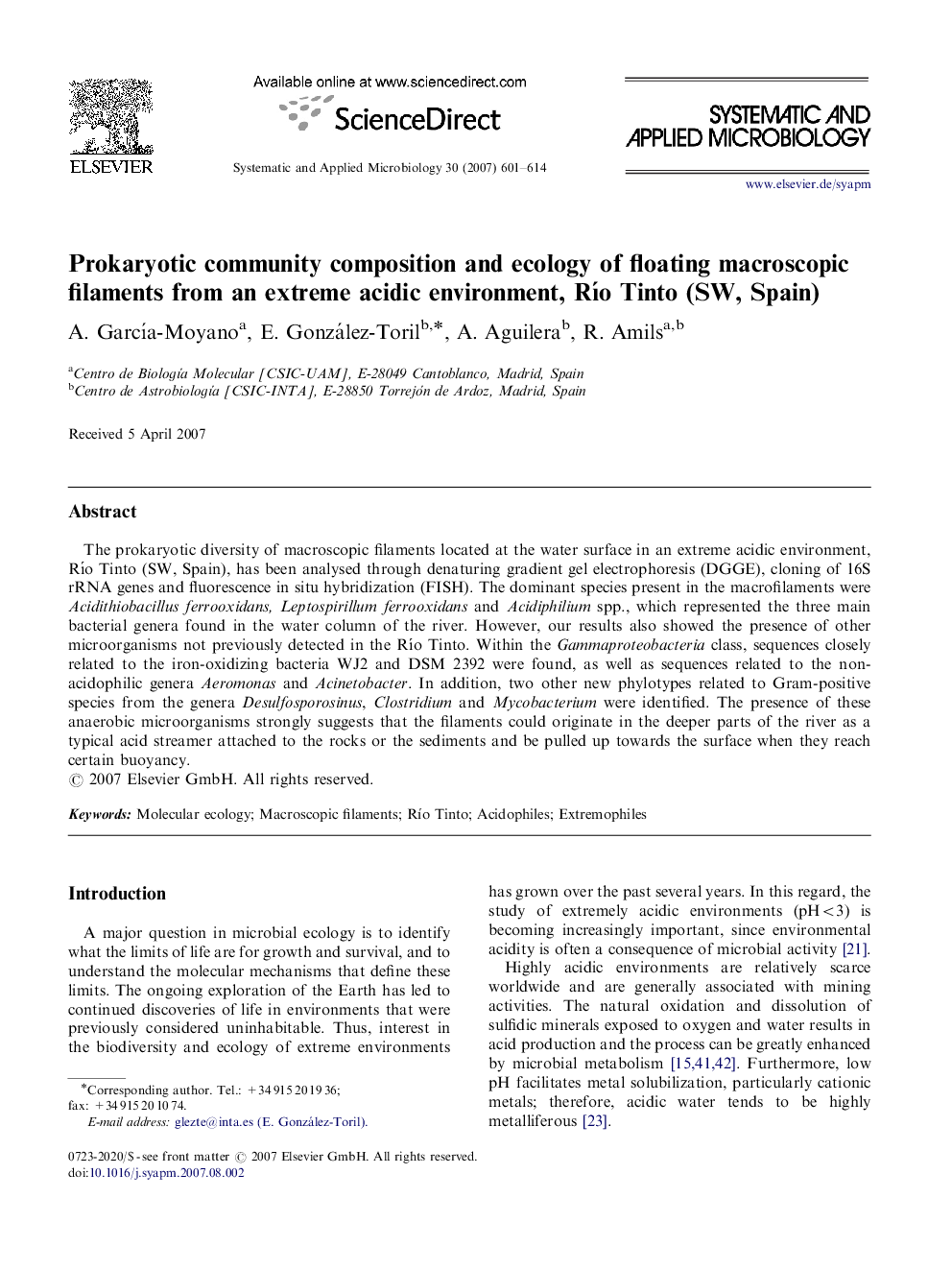| Article ID | Journal | Published Year | Pages | File Type |
|---|---|---|---|---|
| 2063368 | Systematic and Applied Microbiology | 2007 | 14 Pages |
The prokaryotic diversity of macroscopic filaments located at the water surface in an extreme acidic environment, Río Tinto (SW, Spain), has been analysed through denaturing gradient gel electrophoresis (DGGE), cloning of 16S rRNA genes and fluorescence in situ hybridization (FISH). The dominant species present in the macrofilaments were Acidithiobacillus ferrooxidans, Leptospirillum ferrooxidans and Acidiphilium spp., which represented the three main bacterial genera found in the water column of the river. However, our results also showed the presence of other microorganisms not previously detected in the Río Tinto. Within the Gammaproteobacteria class, sequences closely related to the iron-oxidizing bacteria WJ2 and DSM 2392 were found, as well as sequences related to the non-acidophilic genera Aeromonas and Acinetobacter. In addition, two other new phylotypes related to Gram-positive species from the genera Desulfosporosinus, Clostridium and Mycobacterium were identified. The presence of these anaerobic microorganisms strongly suggests that the filaments could originate in the deeper parts of the river as a typical acid streamer attached to the rocks or the sediments and be pulled up towards the surface when they reach certain buoyancy.
